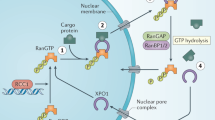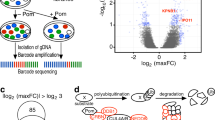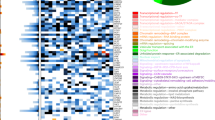Abstract
RNA interference screening identified XPO1 (exportin 1) among the 55 most vulnerable targets in multiple myeloma (MM). XPO1 encodes CRM1, a nuclear export protein. XPO1 expression increases with MM disease progression. Patients with MM have a higher expression of XPO1 compared with normal plasma cells (P<0.04) and to patients with monoclonal gammopathy of undetermined significance/smoldering MM (P<0.0001). The highest XPO1 level was found in human MM cell lines (HMCLs). A selective inhibitor of nuclear export compound KPT-276 specifically and irreversibly inhibits the nuclear export function of XPO1. The viability of 12 HMCLs treated with KTP-276 was significantly reduced. KPT-276 also actively induced apoptosis in primary MM patient samples. In gene expression analyses, two genes of probable relevance were dysregulated by KPT-276: cell division cycle 25 homolog A (CDC25A) and bromodomain-containing protein 4 (BRD4), both of which are associated with c-MYC pathway. Western blotting and reverse transcription-PCR confirm that c-MYC, CDC25A and BRD4 are all downregulated after treatment with KPT-276. KPT-276 reduced monoclonal spikes in the Vk*MYC transgenic MM mouse model, and inhibited tumor growth in a xenograft MM mouse model. A phase I clinical trial of an analog of KPT-276 is ongoing in hematological malignancies including MM.
This is a preview of subscription content, access via your institution
Access options
Subscribe to this journal
Receive 12 print issues and online access
$259.00 per year
only $21.58 per issue
Buy this article
- Purchase on Springer Link
- Instant access to full article PDF
Prices may be subject to local taxes which are calculated during checkout






Similar content being viewed by others
References
Kumar SK, Rajkumar SV, Dispenzieri A, Lacy MQ, Hayman SR, Buadi FK et al. Improved survival in multiple myeloma and the impact of novel therapies. Blood 2008; 111: 2516–2520.
Brenner H, Gondos A, Pulte D . Recent major improvement in long-term survival of younger patients with multiple myeloma. Blood 2008; 111: 2521–2526.
Tiedemann RE, Zhu YX, Schmidt J, Shi CX, Sereduk C, Yin H et al. Identification of molecular vulnerabilities in human multiple myeloma cells by RNA interference lethality screening of the druggable genome. Cancer Res 2012; 72: 757–768.
Pellom ST Jr, Shanker A . Development of proteasome inhibitors as therapeutic drugs. J Clin Cell Immunol 2012; S5: 5.
Xu D, Grishin NV, Chook YM . NESdb: a database of NES-containing CRM1 cargoes. Mol Biol Cell 2012; 23: 3673–3676.
Turner JG, Dawson J, Sullivan DM . Nuclear export of proteins and drug resistance in cancer. Biochem Pharmacol 2012; 83: 1021–1032.
Lapalombella R, Sun Q, Williams K, Tangeman L, Jha S, Zhong Y et al. Selective inhibitors of nuclear export show that CRM1/XPO1 is a target in chronic lymphocytic leukemia. Blood 2012; 120: 4621–4634.
Yao Y, Dong Y, Lin F, Zhao H, Shen Z, Chen P et al. The expression of CRM1 is associated with prognosis in human osteosarcoma. Oncol Rep 2009; 21: 229–235.
Huang WY, Yue L, Qiu WS, Wang LW, Zhou XH, Sun YJ . Prognostic value of CRM1 in pancreas cancer. Clin Inv Med 2009; 32: E315.
Noske A, Weichert W, Niesporek S, Roske A, Buckendahl AC, Koch I et al. Expression of the nuclear export protein chromosomal region maintenance/exportin 1/Xpo1 is a prognostic factor in human ovarian cancer. Cancer 2008; 112: 1733–1743.
Shen A, Wang Y, Zhao Y, Zou L, Sun L, Cheng C . Expression of CRM1 in human gliomas and its significance in p27 expression and clinical prognosis. Neurosurgery 2009; 65: 153–159, discussion 159-160.
Zhang K, Wang M, Tamayo AT, Shacham S, Kauffman M, Lee J et al. Novel selective inhibitors of nuclear export CRM1 antagonists for therapy in mantle cell lymphoma. Exper Hematol 2013; 41: 67–78 e64.
Tai YT, Landesman Y, Acharya C, Calle Y, Zhong MY, Cea M et al. CRM1 inhibition induces tumor cell cytotoxicity and impairs osteoclastogenesis in multiple myeloma: molecular mechanisms and therapeutic implications. Leukemia 2013; e-pub ahead of print 16 April 2013; doi: 10.1038/leu.2013.115.
Newlands ES, Rustin GJ, Brampton MH . Phase I trial of elactocin. Br J Cancer 1996; 74: 648–649.
Sakakibara K, Saito N, Sato T, Suzuki A, Hasegawa Y, Friedman JM et al. CBS9106 is a novel reversible oral CRM1 inhibitor with CRM1 degrading activity. Blood 2011; 118: 3922–3931.
Turner JG, Marchion DC, Dawson JL, Emmons MF, Hazlehurst LA, Washausen P et al. Human multiple myeloma cells are sensitized to topoisomerase II inhibitors by CRM1 inhibition. Cancer Res 2009; 69: 6899–6905.
Etchin J, Sanda T, Mansour MR, Kentsis A, Montero J, Le BT et al. KPT-330 inhibitor of CRM1 (XPO1)-mediated nuclear export has selective anti-leukaemic activity in preclinical models of T-cell acute lymphoblastic leukaemia and acute myeloid leukaemia. Br J Haematol 2013; 161: 117–127.
Etchin J, Sun Q, Kentsis A, Farmer A, Zhang ZC, Sanda T et al. Antileukemic activity of nuclear export inhibitors that spare normal hematopoietic cells. Leukemia 2013; 27: 66–74.
Ranganathan P, Yu X, Na C, Santhanam R, Shacham S, Kauffman M et al. Preclinical activity of a novel CRM1 inhibitor in acute myeloid leukemia. Blood 2012; 120: 1765–1773.
Inoue H, Kauffman M, Shacham S, Landesman Y, Yang J, Evans CP et al. CRM1 Blockade by Selective Inhibitors of Nuclear Export (SINE) attenuates Kidney Cancer Growth. J Urol 2012; 189: 2317–2326.
Azmi AS, Aboukameel A, Bao B, Sarkar FH, Philip PA, Kauffman M et al. Selective inhibitors of nuclear export block pancreatic cancer cell proliferation and reduce tumor growth in mice. Gastroenterology 2012; S0016-5085: 01552–1.
Chesi M, Matthews GM, Garbitt VM, Palmer SE, Shortt J, Lefebure M et al. Drug response in a genetically engineered mouse model of multiple myeloma is predictive of clinical efficacy. Blood 2012; 120: 376–385.
Bergsagel PL, Kuehl WM . Molecular pathogenesis and a consequent classification of multiple myeloma. J Clin Oncol 2005; 23: 6333–6338.
Delmore JE, Issa GC, Lemieux ME, Rahl PB, Shi J, Jacobs HM et al. BET bromodomain inhibition as a therapeutic strategy to target c-Myc. Cell 2011; 146: 904–917.
Kandarpa M, Kraftson SJ, Maxwell SP, McCauley D, Shacham S, Kauffman M et al. CRM1 is highly expressed in myeloma plasma cells and its inhibition by KPT-SINE induces cytotoxicity by increasing p53 in the nucleus of multiple myeloma (MM) cells. ASH Annu Meet Abstr 2011; 118: 1852.
Kong S-Y, Landesman Y, Jakubikova J, Sellitto MA, Cagnetta A, Cea M et al. Blockade of Nuclear Export Protein CRM1 (chromosomal region maintenance 1, XPO1) by a Novel, Potent and Selective CRM1 Inhibitor KPT-185 Induces Significant Antitumor Activity Against Human Multiple Myeloma. ASH Annu Meet Abstr 2011; 118: 2913.
Kuehl WM, Bergsagel PL . Multiple myeloma: evolving genetic events and host interactions. Nat Rev Cancer 2002; 2: 175–187.
Chng WJ, Huang GF, Chung TH, Ng SB, Gonzalez-Paz N, Troska-Price T et al. Clinical and biological implications of MYC activation: a common difference between MGUS and newly diagnosed multiple myeloma. Leukemia 2011; 25: 1026–1035.
Bartek J, Lukas J . Pathways governing G1/S transition and their response to DNA damage. FEBS Lett 2001; 490: 117–122.
Galaktionov K, Chen X, Beach D . Cdc25 cell-cycle phosphatase as a target of c-myc. Nature 1996; 382: 511–517.
Gabrea A, Leif Bergsagel P, Michael Kuehl W . Distinguishing primary and secondary translocations in multiple myeloma. DNA Repair 2006; 5: 1225–1233.
Wu SY, Chiang CM . The double bromodomain-containing chromatin adaptor Brd4 and transcriptional regulation. J Biol Chem 2007; 282: 13141–13145.
Mochizuki K, Nishiyama A, Jang MK, Dey A, Ghosh A, Tamura T et al. The bromodomain protein Brd4 stimulates G1 gene transcription and promotes progression to S phase. J Biol Chem 2008; 283: 9040–9048.
Acknowledgements
This work was supported by MMRF industry award grant. This study was supported in part by the Predolin Foundation. JS was supported by NIH. EB is a recipient of the Marriott Specialized Workforce Development Awards in Individualized Medicine, The Henry Predolin Foundation Career Development Award and the George Haub Family Career Development Award Fund in Cancer Research. JBE was supported by an MMRF fellowship Award. MK is supported by a research grant of the Deutsche Forschungsgemeinschaft (DFG). MC is recipient of a MMRF senior research award and PLB is supported by NIH CA136671 grant. KPT-276 was provided by Karyopharm Therapeutics Inc. (Natick, MA, USA). JQ1 was provided by the laboratory of Dr Jay Bradner (Department of Medical Oncology, Dana-Farber Cancer Institute, Boston, MA, USA).
Author information
Authors and Affiliations
Corresponding author
Ethics declarations
Competing interests
AKS provides consulting services for Millennium and Celgene. MK and SS are founders of and hold equity in Karyopharm. DM is employed by Karyopharm. PLB provides consulting services for Onyx. The remaining authors declare no conflict of interest.
Rights and permissions
About this article
Cite this article
Schmidt, J., Braggio, E., Kortuem, K. et al. Genome-wide studies in multiple myeloma identify XPO1/CRM1 as a critical target validated using the selective nuclear export inhibitor KPT-276. Leukemia 27, 2357–2365 (2013). https://doi.org/10.1038/leu.2013.172
Received:
Revised:
Accepted:
Published:
Issue Date:
DOI: https://doi.org/10.1038/leu.2013.172
Keywords
This article is cited by
-
Selective inhibition of nuclear export: a promising approach in the shifting treatment paradigms for hematological neoplasms
Leukemia (2022)
-
The Role of Belantamab Mafodotin, Selinexor, and Melflufen in Multiple Myeloma
Current Hematologic Malignancy Reports (2022)
-
Targeting Nuclear Export Proteins in Multiple Myeloma Therapy
BioDrugs (2022)
-
Selinexor plus low-dose dexamethasone in Chinese patients with relapsed/refractory multiple myeloma previously treated with an immunomodulatory agent and a proteasome inhibitor (MARCH): a phase II, single-arm study
BMC Medicine (2022)
-
Oncogenic RAS commandeers amino acid sensing machinery to aberrantly activate mTORC1 in multiple myeloma
Nature Communications (2022)



